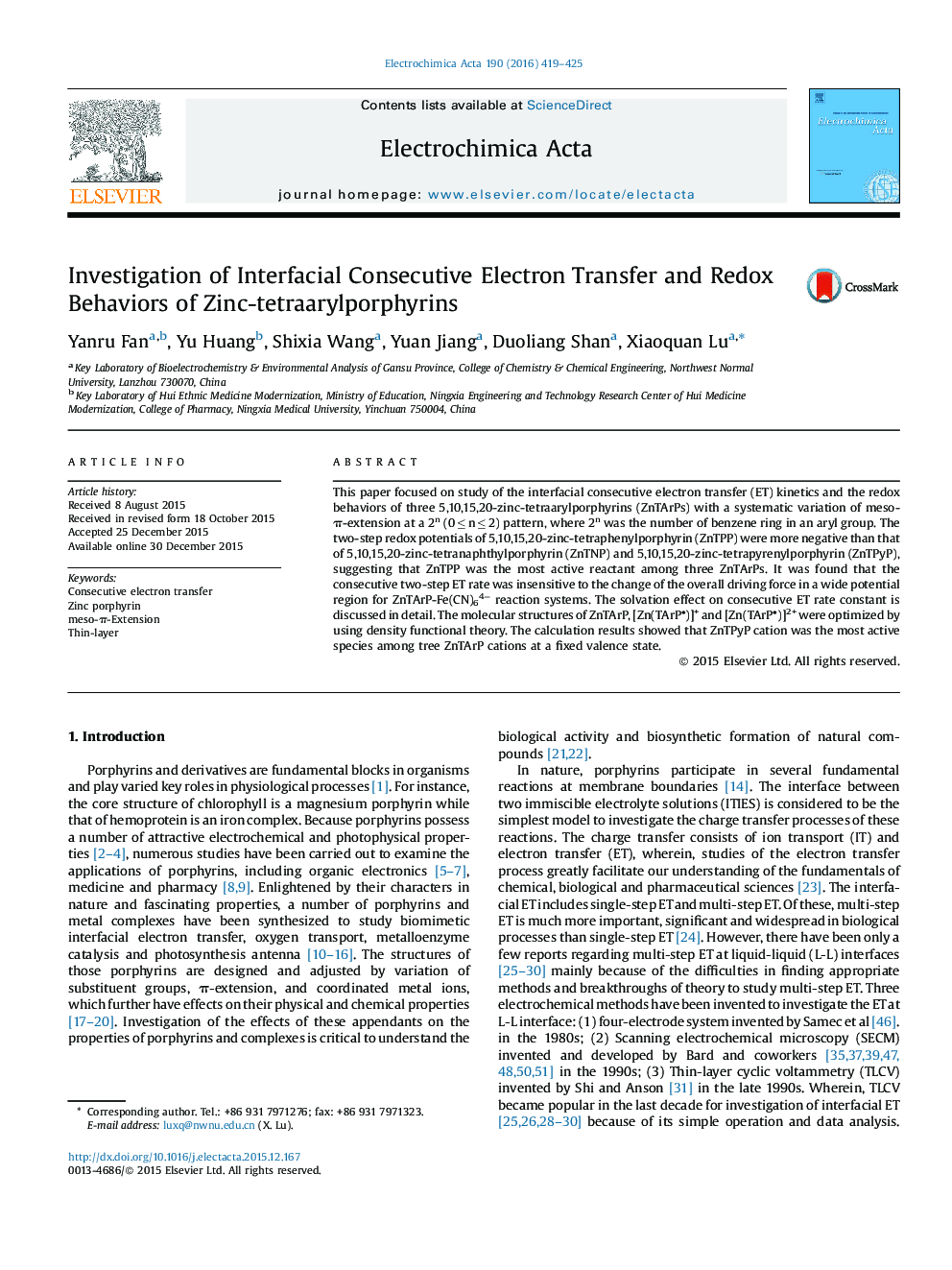| Article ID | Journal | Published Year | Pages | File Type |
|---|---|---|---|---|
| 6609517 | Electrochimica Acta | 2016 | 7 Pages |
Abstract
This paper focused on study of the interfacial consecutive electron transfer (ET) kinetics and the redox behaviors of three 5,10,15,20-zinc-tetraarylporphyrins (ZnTArPs) with a systematic variation of meso-Ï-extension at a 2n (0 â¤Â n â¤Â 2) pattern, where 2n was the number of benzene ring in an aryl group. The two-step redox potentials of 5,10,15,20-zinc-tetraphenylporphyrin (ZnTPP) were more negative than that of 5,10,15,20-zinc-tetranaphthylporphyrin (ZnTNP) and 5,10,15,20-zinc-tetrapyrenylporphyrin (ZnTPyP), suggesting that ZnTPP was the most active reactant among three ZnTArPs. It was found that the consecutive two-step ET rate was insensitive to the change of the overall driving force in a wide potential region for ZnTArP-Fe(CN)64â reaction systems. The solvation effect on consecutive ET rate constant is discussed in detail. The molecular structures of ZnTArP, [Zn(TArP)]+ and [Zn(TArP)]2+ were optimized by using density functional theory. The calculation results showed that ZnTPyP cation was the most active species among tree ZnTArP cations at a fixed valence state.
Keywords
Related Topics
Physical Sciences and Engineering
Chemical Engineering
Chemical Engineering (General)
Authors
Yanru Fan, Yu Huang, Shixia Wang, Yuan Jiang, Duoliang Shan, Xiaoquan Lu,
